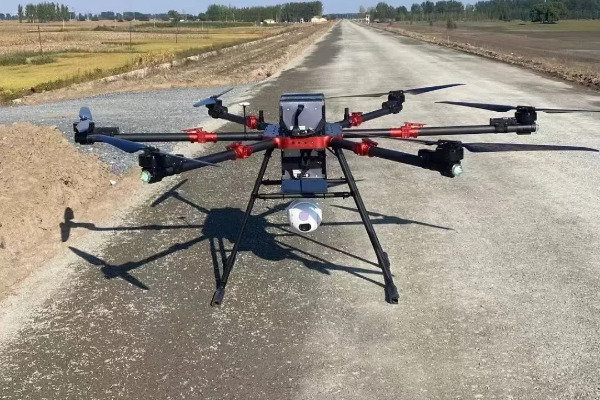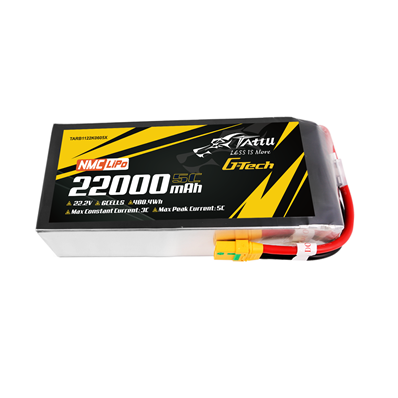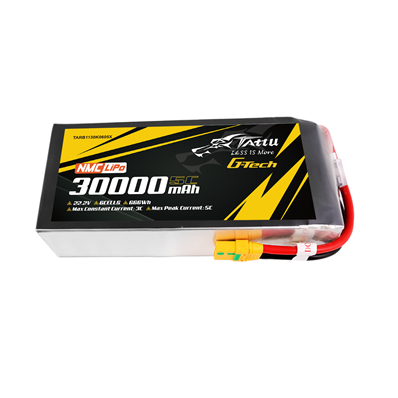Understanding Drone Payload: A Comprehensive Guide
In the rapidly evolving world of aerial technology, drones, or Unmanned Aerial Vehicles (UAVs), have emerged as versatile tools for a multitude of industries. From agriculture and surveillance to delivery services and entertainment, these unmanned aircraft are reshaping how tasks are performed, often in environments where human presence is impractical or dangerous. Central to their effectiveness is an understanding of drone payload—what they can carry and how this capacity influences their operational capabilities. This comprehensive guide will explore the essentials of drone payloads, including key terms, factors affecting capacity, and the various payload types and applications that define the landscape of drone technology today.
What is a Drone or UAV?
A drone, also known as an Unmanned Aerial Vehicle (UAV), is an aircraft that operates without a human pilot on board. Drones are remotely controlled or can fly autonomously through software-controlled flight plans in conjunction with onboard sensors and GPS. They are used across various sectors, including agriculture, surveillance, delivery services, and entertainment, due to their ability to perform tasks that are either too dangerous or impractical for human operators.
What's the Max Takeoff Weight of a Drone?
The Maximum Takeoff Weight (MTOW) of a drone refers to the maximum weight at which the drone is certified to take off. This includes the drone's weight itself, along with any payload it carries, such as cameras, sensors, or other equipment. The MTOW is crucial for safety and performance, as it directly impacts the drone's flight capability, stability, and battery life. Each drone model has a specified MTOW, which is often listed in its technical specifications.
What's the Payload of a Drone?
The payload of a drone is the total weight of the equipment and cargo it can carry in addition to its own weight. This can include cameras, sensors, delivery packages, or any other tools necessary for a specific application. Understanding a drone's payload capacity is vital for ensuring it can effectively complete its intended missions without exceeding the weight limitations. The key difference between the MTOW and payload is that MTOW includes the total weight of the drone plus its payload, while payload refers only to the weight of the cargo or equipment carried. For instance, if a drone has an MTOW of 10 kg and weighs 4 kg itself, it can carry a payload of 6 kg.

How Much Weight Can a Drone Carry?
The amount of weight a drone can carry varies widely based on its design and specifications. For example:
●Consumer Drones: These typically have a payload capacity ranging from 0.5 to 5 kg (1 to 11 lbs).
●Commercial Drones: Medium-sized drones may carry payloads between 5 to 25 kg (11 to 55 lbs).
●Heavy Lift Drones: These specialized drones can carry 25 kg (55 lbs) or more and are often used for applications such as aerial photography, industrial inspections, and medical supply deliveries.
Always refer to the manufacturer's specifications to understand the exact payload capacity of a particular drone model.
Key Factors Affecting Payload Capacity
1. Drone Design and Structure
●Frame Material: The materials used in the drone’s construction (e.g., carbon fiber, plastic, aluminum) affect its weight and strength. Lighter, stronger materials allow for higher payload capacities.
●Frame Size: Larger frames can generally accommodate more powerful motors and larger batteries, supporting greater payloads.
2. Motor Power and Efficiency
●Motor Type: The power and efficiency of the motors determine how much weight the drone can lift. More powerful motors can handle heavier payloads but may also consume more battery power.
●Number of Motors: Drones with more motors (e.g., octocopters) can distribute weight more effectively, enhancing lift capacity.
3. Battery Capacity
●Battery Weight: The weight of the battery affects the overall payload capacity. Heavier batteries can reduce the amount of weight available for the payload.
●Energy Density: Higher energy density batteries can provide more power without significantly increasing weight, improving lift capacity.
4. Flight Control System
Stability and Control Algorithms: Advanced flight control systems can help manage heavier payloads by optimizing stability and maneuverability during flight, allowing the drone to carry more weight safely.
5. Aerodynamics
●Design Shape: A drone’s aerodynamic design influences how efficiently it can fly with a given payload. A well-designed drone can reduce drag, allowing it to carry heavier loads more easily.
●Propeller Size and Pitch: Larger and more efficient propellers can generate more lift, increasing payload capacity. The pitch of the propellers also affects lift and efficiency.
6. Environmental Conditions
●Altitude: Drones operating at higher altitudes may have reduced air density, affecting lift capacity. As altitude increases, a drone may need to reduce its payload to maintain stable flight.
●Weather: Wind speed, temperature, and humidity can also impact flight performance. Adverse conditions may require a reduction in payload for safe operation.
What Are the Main Payload Types of a Drone?
Drones can be equipped with various payload types based on their intended applications. Common payloads include:
1. Cameras: Used for photography, videography, surveillance, and inspections. Cameras can vary in type, such as:
●Standard Cameras: Used for general photography and videography.
●High-Resolution Cameras: Capture detailed images for professional use.
●360-Degree Cameras: Provide panoramic views for immersive experiences.
2. Sensors: Including thermal imaging, LiDAR, and multispectral sensors for environmental monitoring and agriculture.
●Thermal Sensors: Measure heat and are used for search and rescue, building inspections, or wildlife monitoring.
●LiDAR (Light Detection and Ranging): Uses laser light to measure distances and create 3D maps, commonly used in surveying and environmental studies.
●Multispectral Sensors: Capture data across different wavelengths of light, often used in agriculture for crop health analysis.
While many cameras used in drones do have built-in sensors (such as light sensors for exposure), not all sensors are cameras. Some drones may carry separate sensors alongside a camera to gather additional data that complements the visual information captured by the camera. For example, a drone might be equipped with a thermal sensor for detecting heat signatures in addition to a regular camera for capturing video footage. This combination allows for a more comprehensive analysis of the environment.
3. Delivery Packages: For logistics and supply chain management.
4. Scientific Instruments: Used in research applications, including atmospheric and geological studies.
5. Sprayers: For agricultural applications such as pesticide or fertilizer spraying.

Drone Types According to Drone Payloads
According to Drone Payloads weight:
Drones can be categorized based on their payload capacities and the applications they serve:
1. Toy Drones: Typically lightweight with a payload of less than 0.5 kg, used mainly for recreational purposes.
2. Consumer Drones: Suitable for photography and videography, usually carrying lightweight cameras (up to 2-5 kg).
3. Commercial Drones: Used for agricultural monitoring, surveying, and inspections, carrying payloads of 5-25 kg.
4. Heavy Lift Drones: Designed for carrying large payloads (25 kg and above), used in construction, delivery services, and industrial applications.
According to Drone Payloads Applications:
1. Photography and Videography Drones:
●Payload: High-resolution cameras and gimbals for capturing stunning aerial photos and videos.
●Common Uses: Real estate photography, filmmaking, and tourism.
2. Mapping and Surveying Drones:
●Payload: High-resolution cameras, LiDAR sensors, and multispectral sensors for creating detailed maps and 3D models.
●Common Uses: Urban planning, agriculture, and construction.
3. Inspection Drones:
●Payload: High-resolution cameras, thermal cameras, and gas sensors for inspecting infrastructure, power lines, and other hard-to-reach areas.
●Common Uses: Oil and gas, energy, and construction.
4. Delivery Drones:
●Payload: Cargo compartments or delivery boxes for transporting small packages.
●Common Uses: E-commerce, medical deliveries, and disaster relief.
5. Agricultural Drones:
●Payload: Multispectral sensors, sprayers, and seed dispensers for precision agriculture tasks like crop monitoring, spraying, and seeding.
●Common Uses: Farming and agriculture.
6. Search and Rescue Drones:
●Payload: High-resolution cameras, thermal cameras, and infrared sensors for locating and rescuing people in disaster zones.
●Common Uses: Emergency services and disaster response.
What is a Heavy Lift Drone and When Do You Need It?
A Heavy Lift Drone is a type of UAV specifically designed to carry substantial payloads, typically over 25 kg (55 lbs). These drones are often multi-rotor or fixed-wing configurations and are equipped with powerful motors and robust structures to handle the extra weight.
When to Use a Heavy Lift Drone:
1. Construction: Transporting materials such as tools, safety gear, or equipment to hard-to-reach locations.
2. Agriculture: Distributing fertilizers or pesticides over large fields more efficiently.
3. Film and Photography: Carrying high-end cameras and equipment for aerial cinematography.
4. Logistics and Delivery: Delivering larger packages or medical supplies in emergency situations.
Conclusion
In conclusion, understanding drone payloads is essential for maximizing their effectiveness across various applications. By knowing the MTOW, the difference between MTOW and payload, and the types of payloads available, users can select the right drone for their needs, ensuring safe and efficient operation. As a global leading lipo battery manufacturer, Grepow provides a range of batteries tailored for different drone types: high-rate FPV batteries with a 150C discharge for consumer drones, reliable pouch and smart UAV batteries (6S to 18S) for commercial drones, and high-energy-density semi-solid state batteries (up to 320 Wh/kg) for heavy lift drones, with capacities ranging from 850 mAh to 84 Ah. These solutions ensure optimal performance regardless of payload type or weight, meeting the diverse needs of various drone applications. If you have any questions or needs, please feel free to contact us at info@grepow.com.
Related Articles:
An In-Depth Guide to Drone Motors
What is a Drone ESC and Is it Important?
How to Choose the Right Drone Propeller?
What Is A Drone Flight Controller?
How To Choose The Right Motors And Propeller For Different Drone Applications?
Related Articles
-

Powering Aerial Artistry: Grepow Battery Solutions Behind Drone Light Shows
2025-10-27 -

Vatican Drone Show: Where Technology Meets Faith
2025-09-15 -

Why Do We Need Silent Drones?
2025-09-02
Related products
-

22000mAh 22.2V 6S Semi-Solid State Battery Pack with G-Tech
-

30000mAh 22.2V 6S Semi-Solid State Battery Pack with G-Tech
-

17000mAh 22.2V 6S Semi-Solid State Battery Pack with G-Tech
















































